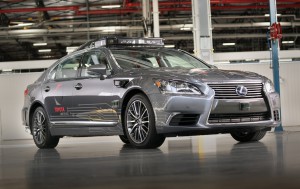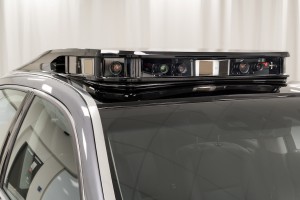
Toyota plans to debut its updated autonomous vehicle, Platform 3.0, at the Consumer Electronics Show.
Toyota Research Institute will unveil the latest iteration of its automated driving research vehicle, Platform 3.0, at the Consumer Electronics Show next week.
The Japanese automaker has concentrated much of its work on autonomous vehicles within the institute, based in Ann Arbor, Michigan, which is west of Detroit. The most substantial improvement in the new model is the Lidar usage.
Prior to this, the vehicle’s Luminar Lidar system only scanned 200 yards in front of the car, but now it offers 360-degree coverage, a critical upgrade to move closer to Level 5 autonomy.
“Our team has once again rapidly advanced our automated vehicle research capabilities,” said Dr. Gill Pratt, TRI CEO and Toyota Motor Corporation (TMC) Fellow. “To elevate our test platform to a new level, we tapped Toyota’s design and engineering expertise to create an all-new test platform that has the potential to be a benchmark in function and style.”
(Toyota poised to slip to third place in global sales behind Renault-Nissan. Click Herefor the story.)
According to Toyota, the company’s development approach covers three core principles: (1) Elevate perception capabilities to be an industry pacesetter among automated vehicles; (2) Blend the sensing equipment into the vehicle design with a distinct appearance that is sleek and elegant; (3) Package the automated vehicle technology in a manner that is easy to reproduce for building a fleet at scale.
The new system incorporates all three of those principles. The “sensor-rich” package certainly upgrages the vehicles perception capabilities. The 360-degree coverage is implemented using four high-resolution Lidar scanning heads, which precisely detect objects in the environment including notoriously difficult-to-see dark objects.
They are positioned low on all four sides of the vehicle – one in each front quarter panel and one each on the front and rear bumpers. These can detect low-level and smaller objects near the car like children and debris in the roadway, Toyota noted. The new platform remains flexible for incorporating future breakthrough technology as it becomes available.
(Click Here to see why Toyota expects electrified vehicles will make up half of sales by 2030.)
The new model also eliminates the extremely conspicuous “spinning bucket” Lidar sensor on the roof of the car. TRI worked with CALTY Design Research and engineers at Toyota Motor North America Research and Development to compact and conceal the sensors and cameras. They created a new rooftop weather and temperature proof panel, using available space in the sunroof compartment to minimize the overall height. The design eliminates the look of equipment as bolt-on appendages.
“Automotive designers’ roles have been pivoting toward thinking deeper and greater on how to design and apply automated driving technology for drivers and passengers,” said Scott Roller, senior lead designer at CALTY Design Research who worked on the project. “It’s exciting to integrate the components in harmony with the car’s design.”
The vehicle’s computational architecture for operating the automated vehicle components, which previously consumed nearly all trunk space, has also been consolidated. The electronics infrastructure and wiring in condensed into a small box that is adorned with an LED-lit TRI logo.
(To see more about Kia’s concept debuting at CES, Click Here.)
Toyota will start building the Platform 3.0 vehicles in low volume this spring at the Prototype Development Center at in York Twp., Michigan, from stock Lexus LS models. The low volume build allows for any adjustments or changes that may need to be made.

